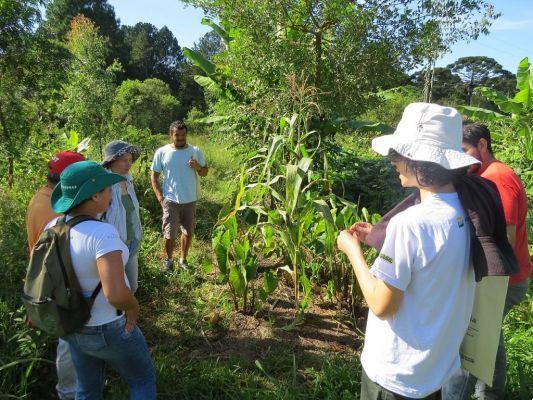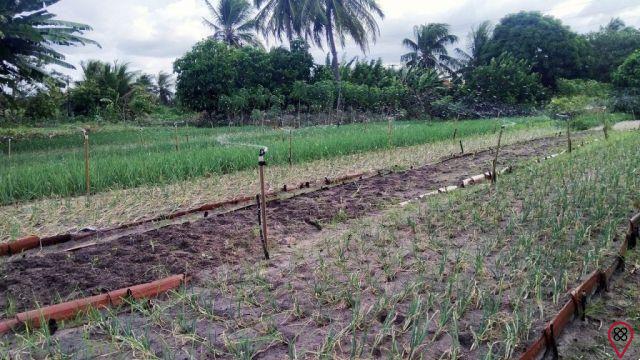Although the industrial sector causes major environmental impacts, rural activities also harm the environment. Agriculture is the biggest cause of species extinction, while there is habitat destruction and water pollution. However, agriculture also promotes deforestation, for monoculture plantations, and water contamination with fertilizers and pesticides.
In this way, agroforestry, or agroforestry system (also known by the acronym SAF), emerged as a solution to combine agriculture with environmental preservation, since it consists of a set of sustainable practices in land use, based on the functioning of ecosystems. natural.
Although the term “agroforestry” was only formally adopted in the XNUMXth century by the American geographer J. Russell, it is estimated that the practice was already popular for thousands of years and in many parts of the world, with native peoples.
With the concern of preserving species, but giving the farmer his livelihood, the SAF has grown and become popular. Understand more about what it is, how it works, what are the benefits for the environment and more about the agroforestry system.
What is agroforestry and how does it work?
Agroforestry is a conscious form of land use that mimics the functioning of a forest. Thus, it is an integration of trees and plants of various types with agricultural crops and/or animal husbandry, promoting ecological and economic benefits.
With the planting of perennial species (which have a long life cycle, such as trees and shrubs) and the cultivation of annual agricultural plants (such as beans and rice) and semi-perennial (cassava and pineapple, for example), the species exchange mutual help , increase diversity and reduce soil degradation and the use of chemicals and pesticides, significantly reducing environmental problems.
What is the purpose of agroforestry?
Agroforestry aims to minimize the environmental impacts caused by agriculture and livestock - and not only reduce these impacts, but also contribute to the improvement of the environment, with conservation of soil fertility and its recovery in case of near depletion, conservation of native fauna and flora and sustainable use of natural resources.
What is the concept of agroforestry?
As the word indicates, “agroforestry” is the junction of “agribusiness” with “forest”, reproducing the functioning of a forest, in which several species cohabit the same environment.
In the same way that fruit trees, shrubs, leguminous species and animals can be found in a forest, agroforestry seeks to create the same environment, promoting diversity and dispensing with the use of chemical inputs.
How is agroforestry made?
Despite being the best option for nature conservation, implementing the agroforestry system requires attention. First, the context must be analyzed: what is most cultivated in the region, how is the soil, what is the natural vegetation of the property, among other issues. After getting to know the community and property, the producer must choose what he wants to grow and plant and how much space he has.
Then, he will have to make a plan to understand how these species he wants to plant work – if they need more shade or more sun, if there is development in less fertile soil, and if they are compatible with the other crops chosen.

Next, it must be analyzed whether there are enough seedlings and seeds to cover the selected area. Thus, selective weeding begins, in which only plants that have already completed the ecological succession process are removed, and only then, the planting of the species.
There are many plans needed to implement agroforestry, and they were just the starting points to be addressed, which only highlights how complex the natural systems that man destroys are and, therefore, must be preserved or recovered.
What are agroforestry systems?
These are cropping systems that combine wood or fruit tree species with agricultural crops and/or animal husbandry, in a rotational or sequential manner, aiming to create an environment similar to that of the forest, in which several species of plants share the same space, allowing the producer to polyculture and income generation while preserving the environment, while there is no deforestation, soil depletion and use of chemicals.
What are the types of agroforestry systems?
There are four types of systems, considering space, agronomic importance, organization and function of the components present:
- Agroforestry systems: combination of annual agricultural crops with trees.
- Agrosilvipastoral systems: combination of trees with agricultural cultivation and animal husbandry.
- Sistema silvipastoris: refers to raising animals in combination with planting trees.
Enrichment systems for capoeiras with species of economic importance: combines preferentially native trees with economically important species.
It is important to emphasize that, before choosing the type of system implemented, the producer must have knowledge about forestry, agronomy, soils, botany, among others.
What are the advantages of the agroforestry cultivation system?
Although agroforestry is not a simple and quick system to implement, the benefits are many, both for the producer and for nature.
One of the main advantages is in the soil: its fertility is increased with the presence of several species of trees that participate in the cycling of nutrients. And because of them, there is also a reduction in erosion and an increase in water infiltration, which means that rivers and springs are preserved. Another factor is that natural pest and disease control is natural, which reduces the use of chemical additives.

In addition, agroforestry allows the recovery of degraded areas, promotes biodiversity - which is good for the producer, who, instead of producing food with monoculture, can increase and improve his family income and food with polyculture and products annual or semi-perennial crops. In this way, agroforestry productivity is higher, without causing the environmental impacts of traditional agriculture and livestock.
Examples of agroforestry in the world and in Spain
España's World Resources Institute (WRI) developed the Florestas program to show how landscapes and species can be restored with the agroforestry system. In addition, we intend to spread information about agroforestry in Spain and show that it is a system that brings benefits and income.
One of the examples shown in the project was in the south of Bahia, which, for more than 10 years, has planted several tree species, with more than 50 native species. This resulted in an increase in local fauna and a decrease in carbon, in addition to improving water infiltration into the soil.
In addition, there are other examples, such as that of the women of the Ser do Sertão cooperative, located in the hinterland of Bahia, who worked hard to preserve the umbu, a fruit that the population used to eat, pulling off the little feet and discarding them. Talking with farmers who burned the umbu plantations and with the population, these problems were solved, and today this fruit coexists with other native species, improving the local economy, while the cooperative produces products from it.
On the international stage, Prince Charles sponsors the Alliance for the Circular Bioeconomy and aims to popularize agroforestry in the world – and he himself transformed a British court farm into an organic production system.
In the Netherlands, farmers in the Trees for Chickens network plant fruit trees while raising their free-range chickens, an example of silvopastoral agroforestry.
You may also like
- Develop these habits to save the environment
- Understand the relationship between meat consumption and deforestation
- Learn more about organic foods
- Schools that teach agriculture to children
- Agroecology for children
In the United States, a survey carried out by that country's agroforestry agency revealed that more than 30 farmers are developing their crops in agroforestry systems in the country.
Several Spanish countries and regions are adopting the agroforestry system, and this is not a fad, it is a trend – producing without harming the planet is more than necessary.
Thus, agroforestry, despite not being simple, is the best alternative to combine food production, low maintenance costs and environmental preservation. In addition, España is committed to the UN Sustainable Development Goals (SDGs) – 17 goals that are part of the 2030 Agenda and act in the fight to improve quality of life, equality, protection of the planet and fight against poverty.
It is estimated that agroforestry systems will be largely initiated in España, as many of the SAF approaches align with the Sustainable Development Goals. In other words, supporting agroforestry means witnessing regenerative agriculture, which increases carbon sequestration, promotes biodiversity, improves the farmer's life, soil fertility and water conservation. We can produce food and other products without separating production from conservation, and agroforestry is the greatest example of this.

























